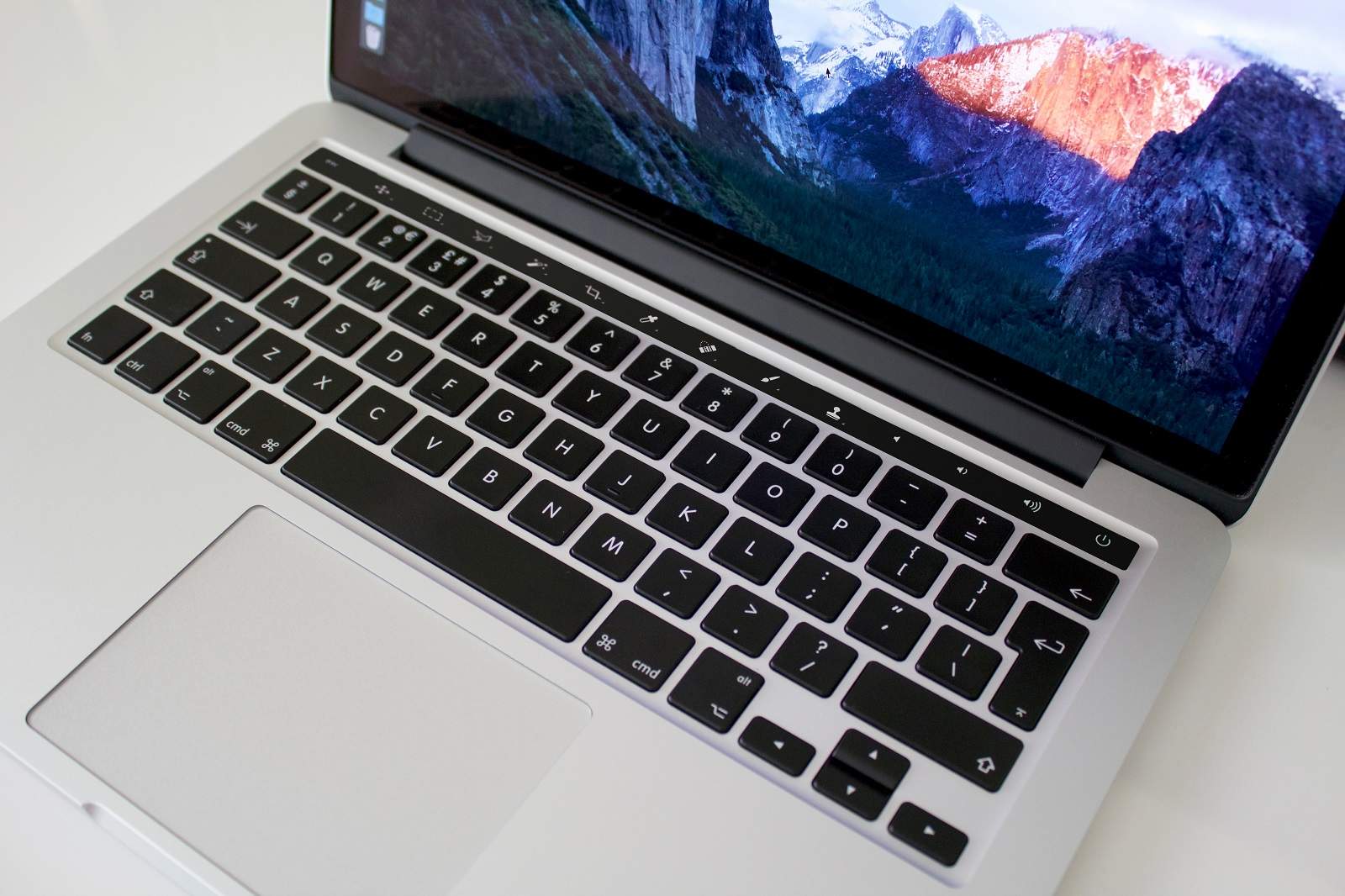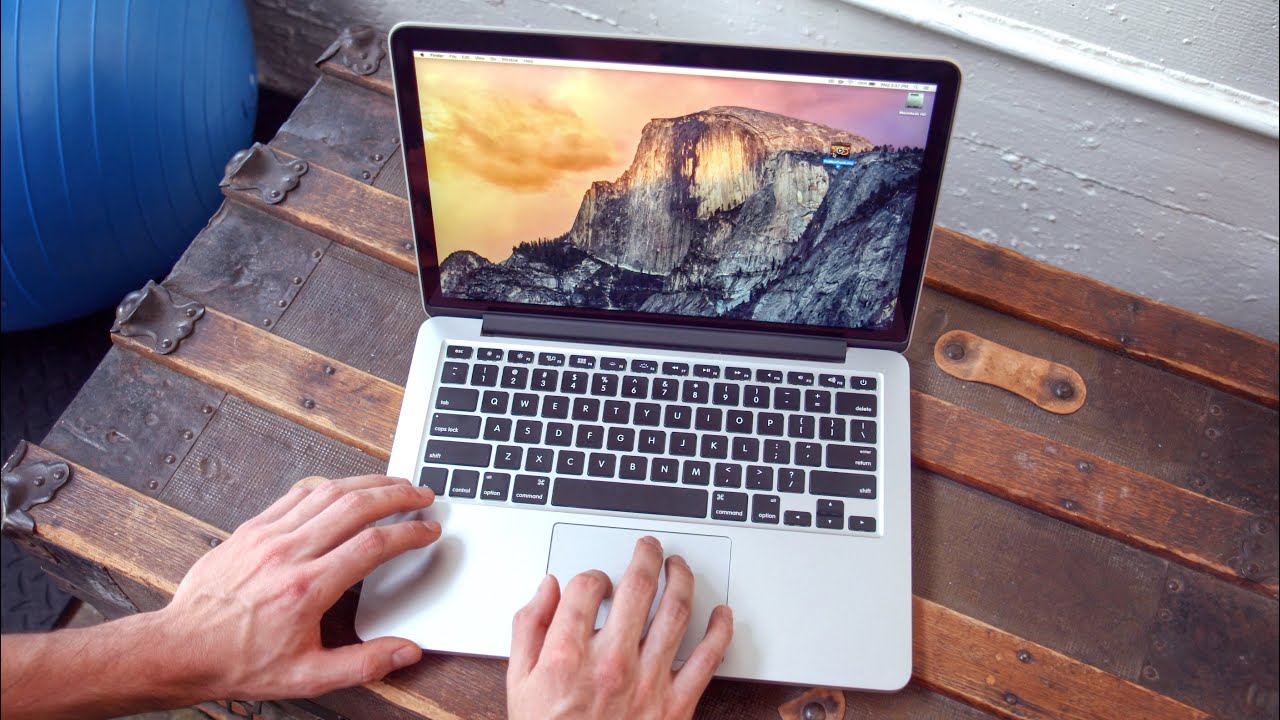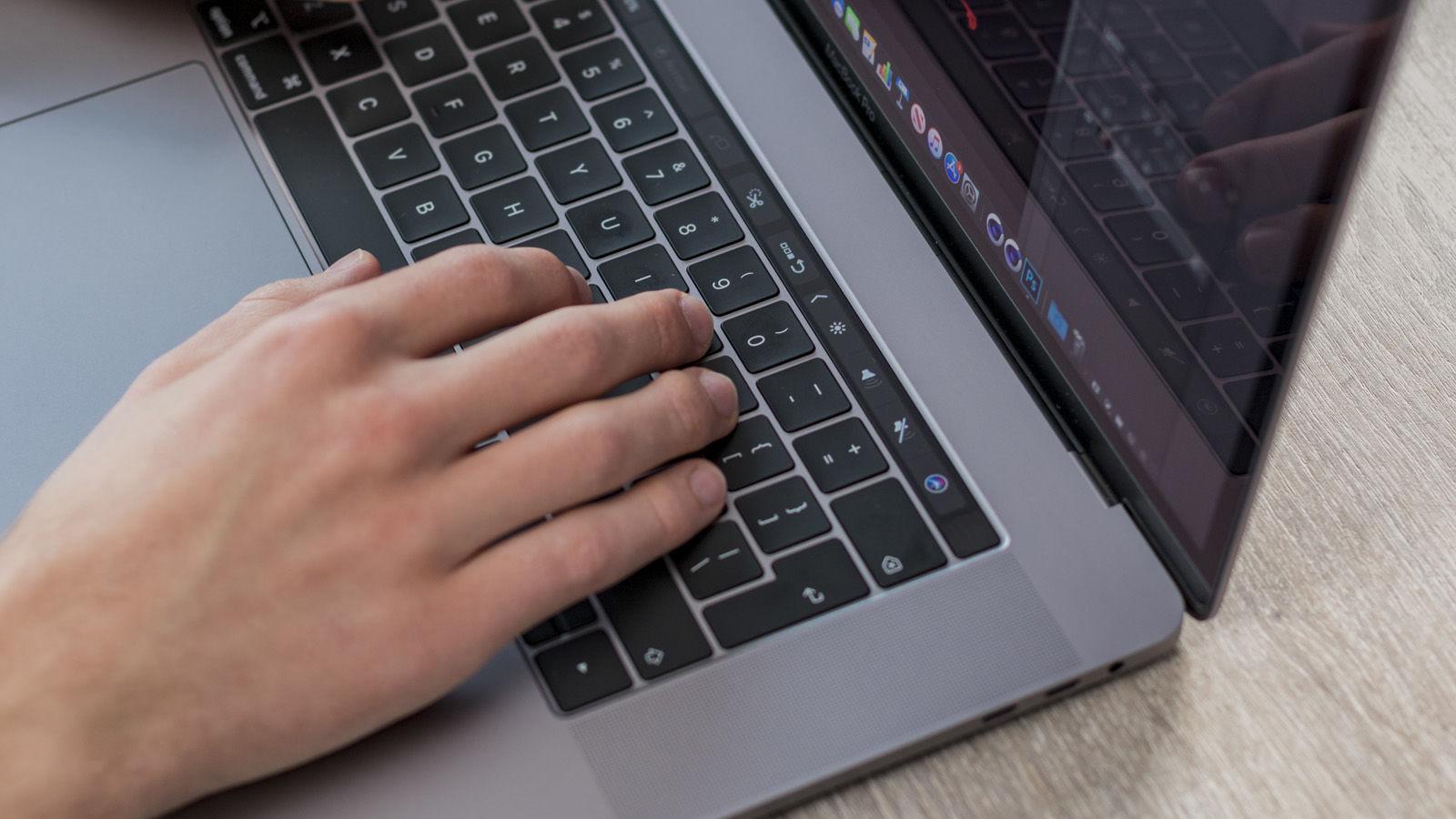The MacBook, known for its sleek design and powerful performance, has become an indispensable tool for many individuals in both personal and professional settings. However, like any piece of technology, MacBooks are not immune to issues, and one of the most common complaints users face is when their MacBook keys stop working as expected.
In this article, we delve into the reasons why MacBook keys not workingand explore various solutions to help users get their keyboards back in working order. Whether it's a single key or a cluster of keys, this problem can disrupt productivity and create frustration.
What Causes A MacBook Keys Or Keyboard To Stop Working?
Many MacBook Air and MacBook Pro users have had problems with their laptops at least once. This is especially true for the older computers with butterfly keys.
Ever thought about how Apple laptops are so thin? The butterfly keyboard device used to be a part of that. Most keyboards have a scissor mechanism that puts pressure on the keys so they click back into place when you're done working. However, Apple made a switch that is as thin and elegant as a butterfly, which is how it got its name. The butterfly keyboard is unfortunately very flimsy. If even a little bit of dust gets under a key and into the mechanism, it can cause problems like a key repeating, sticking, or not registering hits at all.
Several factors can cause MacBook keys or the entire keyboard to stop working. These issues may range from minor to more complex hardware or software-related problems. Here are some common causes:
- Dust and Debris -Over time, dust, crumbs, or other debris can accumulate beneath the keys, obstructing their movement and causing unresponsiveness.
- Physical Damage -Accidental spills or impacts can lead to physical damage to the keyboard, resulting in keys that no longer register when pressed.
- Software Glitches -MacOS updates or software conflicts can occasionally disrupt keyboard functionality. These issues are often resolved through software troubleshooting.
- Battery or Power Problems -Low battery levels or power-related issues can cause unusual keyboard behavior, especially in wireless MacBook models.
- Hardware Failure -In more severe cases, there may be a hardware malfunction, such as a defective keyboard or a disconnected keyboard ribbon cable.
Identifying the specific cause of your MacBook's keyboard issues is crucial for effective troubleshooting and resolution. Depending on the underlying problem, solutions may vary from simple cleaning to more complex hardware repairs.
How To Fix A MacBook Keys Or Keyboard That Isn't Working 10 Steps
Fixing a MacBook with keys or a keyboard that isn't working can be a step-by-step process that involves both software and hardware troubleshooting. Here are 10 steps to help you diagnose and resolve the issue:
Check For Dust And Debris
- Turn off your MacBook and carefully examine the keyboard.
- Use compressed air or a soft brush to remove any dust or debris that may be obstructing the keys.
- Pay extra attention to problem keys.
Restart Your MacBook
- Sometimes, a simple restart can resolve software glitches.
- Save your work and click on the Apple logo in the top-left corner, then select "Restart."
Check For MacOS Updates
- Outdated software can lead to keyboard problems.
- Ensure your macOS is up to date by going to "System Preferences" > "Software Update" and installing any available updates.
Test In Safe Mode
- Boot your MacBook in Safe Mode by holding down the Shift key during startup.
- Safe Mode disables certain software elements that could be causing issues.
- Check if the keys work in Safe Mode.
Reset NVRAM/PRAM And SMC
- Resetting the non-volatile RAM (NVRAM) or parameter RAM (PRAM) and the System Management Controller (SMC) can often resolve hardware-related issues.
- Instructions for doing this can vary depending on your MacBook model, so consult Apple's official documentation for guidance.
External Keyboard Test
- To determine if the issue is hardware-related, connect an external USB keyboard to your MacBook.
- Test if the keys work with the external keyboard. If they do, it's likely a problem with your MacBook's internal keyboard.
Create A New User Account
- Sometimes, keyboard issues can be user-specific.
- Create a new user account and see if the keys work correctly in the new account. If they do, the problem may be associated with your user profile.
Check For Accessibility Settings
- In some cases, accessibility settings may be causing keyboard problems.
- Go to "System Preferences" > "Accessibility" and review any keyboard-related settings.
Backup And Restore
- If none of the above steps resolve the issue, consider backing up your data and performing a macOS reinstallation or restore.
- This can help if there's software corruption causing keyboard problems.
Consult Apple Support
- If all else fails, it's advisable to contact Apple Support or visit an Apple Store or authorized service provider.
- They can diagnose and repair hardware-related problems or provide further guidance on resolving the issue.
Remember to document any error messages or unusual behavior you encounter during these troubleshooting steps, as this information can be valuable when seeking assistance from Apple Support or a professional technician.
What If Your MacBook Keys Or Keyboard Still Doesn’t Work?
If your MacBook keys or keyboard still don't work after trying the troubleshooting steps mentioned earlier, it can be frustrating, but there are a few additional actions you can take:
- Professional Diagnosis -If you haven't already, consider contacting Apple Support or visiting an Apple Store or authorized service provider. They have specialized tools and expertise to diagnose and repair hardware issues. They can identify if there's a malfunctioning keyboard or other hardware component that needs replacement.
- Warranty and Repair Coverage -Check your MacBook's warranty status. If your device is still under warranty, the repairs may be covered, depending on the specific issue and warranty terms. If you have AppleCare, it can extend your coverage.
- Third-Party Repair Services -If your MacBook is out of warranty or if you prefer not to go through Apple, you can seek assistance from reputable third-party repair services. Make sure they have experience with MacBook repairs and use genuine Apple parts.
- External Keyboard -If you need to use your MacBook urgently and can't get the internal keyboard fixed immediately, you can connect an external USB or Bluetooth keyboard to continue working. This is a temporary solution but can be quite effective.
- Data Backup -Prioritize backing up your important data regularly, even if your keyboard isn't functioning. This ensures you don't lose valuable information in case of further complications or during the repair process.
- Consider Replacement -Depending on the severity of the keyboard issue and the age of your MacBook, it might be more cost-effective to consider replacing the laptop with a new model or a certified refurbished one. Newer models may also have improved keyboards and other features.
Remember that diagnosing and repairing hardware issues can sometimes be complex, and it's essential to rely on professional assistance when necessary. Attempting to disassemble or repair the internal components of your MacBook without the proper expertise can lead to further damage.
How Do You Reset An External MacBook Keyboard? FAQ
My External Keyboard Isn't Working. What Should I Do First?
Begin by checking the following:
- Ensure the keyboard is connected properly to your MacBook, whether it's through a USB cable or a Bluetooth connection.
- Confirm that the keyboard is powered on and has working batteries if it's wireless.
- Try connecting the keyboard to another device (if possible) to determine if the issue is specific to your MacBook.
The Keys On My External Keyboard Are Unresponsive. What Can I Try Next?
If the keys aren't responding, consider these steps:
- Disconnect and then reconnect the keyboard to your MacBook.
- For a Bluetooth keyboard, turn off Bluetooth on your MacBook and then turn it back on. Repair the keyboard if necessary.
- Test the keyboard on another device to see if it works there. If it does, the problem may be with your MacBook.
Some Keys On My External Keyboard Are Not Working Correctly. How Can I Fix This?
If specific keys are malfunctioning, you can:
- Carefully clean the affected keys using compressed air or a soft brush to remove any debris.
- Test the problematic keys on another device to determine if the issue is with the keyboard itself.
None Of The Above Steps Worked. What Else Can I Do?
A:If none of the above steps resolve the issue, it might be a hardware problem with the keyboard. In this case, you may need to contact the keyboard's manufacturer for warranty support or consider purchasing a replacement keyboard.
How Can I Perform A Factory Reset On My External Keyboard?
Factory resets for external keyboards are not typical, as they don't usually have extensive onboard firmware or settings. However, if your keyboard has specific customization software or firmware updates available, consult the manufacturer's documentation for instructions on how toreset or update the keyboard's firmware.
Can I Reset My MacBook's Internal Keyboard Settings When Using An External Keyboard?
Yes, you can reset your MacBook's internal keyboard settings separately from an external keyboard. To reset your MacBook's internal keyboard settings, you can go to "System Preferences" > "Keyboard" and then click the "Restore Defaults" button.
How Do You Turn On Backlights On A MacBook Keyboard? FAQ
How Do You Turn On The Backlights On A MacBook Keyboard?
Adjusting the keyboard backlight on a MacBook is a simple process. Here's a FAQ-style guide to help you with common questions related to turning on and controlling the keyboard backlight:
Does My MacBook Have A Backlit Keyboard?
Not all MacBook models have backlit keyboards. MacBook Air and MacBook Pro models typically include backlit keyboards, but MacBook models like the standard MacBook (previously known as the MacBook Retina) may not have this feature. You can check your MacBook's specifications on Apple's official website or the "About This Mac" option in the Apple menu to confirm if your model includes a backlit keyboard.
How Do I Turn On The Keyboard Backlight On My MacBook?
To turn on the keyboard backlight on a MacBook with this feature, follow these steps:
- Press the "F5" (brightness down) key or "F6" (brightness up) key on your MacBook's built-in keyboard. These keys typically have icons that look like a sun with increasing or decreasing lines.
- The keyboard backlight should adjust in brightness or turn on if it was previously off. On some models, you may need to hold down the "Fn" key while pressing "F5" or "F6" to control the backlight.
Can I Adjust The Brightness Of The Keyboard Backlight On My MacBook?
Yes, you can adjust the brightness of the keyboard backlight to your preference. To do this:
- Press the "F5" key (brightness down) to decrease the backlight brightness.
- Press the "F6" key (brightness up) to increase the backlight brightness.
Is It Possible To Set The Keyboard Backlight To Automatically Adjust Based On Ambient Light Conditions?
Yes, on some MacBook models, you can enable the "Ambient Light Sensor" feature to have the keyboard backlight automatically adjust based on the surrounding light conditions. To enable this feature:
- Go to "System Preferences."
- Click on "Keyboard."
- Check the box next to "Adjust keyboard brightness in low light."
Why Isn't The Keyboard Backlight Working On My MacBook?
If the keyboard backlight isn't working, consider these troubleshooting steps:
- Ensure you have a MacBook model with a backlit keyboard.
- Check that your MacBook is not in a well-lit environment, as the backlight is more noticeable in low-light conditions.
- Restart your MacBook.
- Make sure you're using the correct function keys (F5 and F6) to adjust the backlight.
- Check your MacBook's settings to ensure that the keyboard backlight feature is enabled.
Is There Third-party Software Available To Control The Keyboard Backlight On A MacBook?
While macOS provides built-in functionality to control the keyboard backlight, some third-party applications may offer additional customization options for keyboard backlighting. However, exercise caution when installing third-party software, and ensure it is from a trusted source.
How Can You Lock The Keyboard On A MacBook? FAQ
How Can You Lock The Keyboard On A MacBook?
Locking the keyboard on a MacBook typically involves either putting the computer to sleep or enabling a screen lock for security purposes. Here's a FAQ-style guide to help you understand how to lock the keyboard on your MacBook:
Is There A Specific "Keyboard Lock" Function On A MacBook?
Unlike some other operating systems, macOS does not have a dedicated "keyboard lock" function. Instead, you can lock your MacBook in various ways to prevent unauthorized access.
How Can I Lock My MacBook's Screen To Secure It?
To lock your MacBook's screen and require a password or Touch ID to unlock it, you can do the following:
- Click on the Apple logo in the top-left corner.
- Select "Lock Screen" or "Log Out [Your Name]." This will lock the screen and require your password or Touch ID to unlock it.
How Can I Put My MacBook To Sleep To Temporarily Disable The Keyboard And Screen?
Putting your MacBook to sleep effectively "locks" the keyboard and screen. You can do this by:
- Closing the lid of your MacBook (for MacBook models with a clamshell design).
- Pressing the power button briefly and selecting "Sleep" from the menu that appears.
- Use a keyboard shortcut, such as the Control+Shift+Power button (on MacBooks with Touch ID) or Control+Shift+Eject key (on MacBooks with physical function keys).
Can I Set A Hotkey Or Keyboard Shortcut To Lock The Screen On My MacBook?
macOS does not have a built-in keyboard shortcut to lock the screen, but you can create a custom one:
- Go to "System Preferences."
- Click on "Security & Privacy."
- Go to the "General" tab.
- Check the box next to "Require password [X] minutes after sleep or screen saver begins."
- Set the timer to your desired time.
- Create a keyboard shortcut to activate the screensaver quickly. Go to "System Preferences" > "Keyboard" > "Shortcuts" > "App Shortcuts," click the "+" button, and add a custom shortcut for the "Screen Saver" option.
Is There Third-Party Software Available For Locking The Keyboard On A MacBook?
While macOS provides built-in functionality to lock the screen and require a password or Touch ID to unlock it, some third-party applications may offer additional customization options for screen locking. Be cautious when installing third-party software, and ensure it is from a trusted source.
People Also Ask
How Do I Clean My MacBook Keys?
To clean your MacBook keys, turn off the laptop and use compressed air to blow out any dust or debris. You can also use a soft brush or a microfiber cloth to gently wipe the keys. For stubborn spots, you can dampen the cloth with a small amount of isopropyl alcohol.
Why Are Some MacBook Keys Not Working?
Several factors can cause MacBook keys to stop working, including dust and debris under the keys, physical damage, software glitches, low battery levels, or hardware failure. Troubleshooting steps can help identify and address the specific issue.
Can I Replace A Single MacBook Key If It's Not Working?
Yes, it is possible to replace a single MacBook key if it's not working. You can purchase replacement keys or keycap sets online and follow DIY guides to replace the key. However, it can be a delicate process, and some MacBook models may require professional assistance for key replacements.
How Do I Disable The MacBook Keyboard Temporarily?
You can disable the MacBook's built-in keyboard temporarily by connecting an external USB keyboard or disabling the internal keyboard in the Accessibility settings. To do this, go to "System Preferences" > "Accessibility" > "Keyboard" and check the box next to "Enable Slow Keys." This will disable the internal keyboard until you uncheck the box.
Why Do Some MacBook Keys Make A Clicking Noise?
The clicking noise you hear from MacBook keys is often due to the mechanism beneath the keys. Older MacBook models, particularly those with the butterfly keyboard design, were known for their distinctive clicky sound. This sound is normal and doesn't necessarily indicate a problem unless the key is also unresponsive or sticky.
Conclusion
A MacBook with malfunctioning keys is a hurdle that many users encounter at some point. While the causes can range from simple dust and debris accumulation to more complex hardware issues, the solutions are often within reach. Through careful troubleshooting, regular maintenance, and, when necessary, seeking professional assistance, MacBook users can ensure that their keyboards remain a reliable tool for their daily tasks. Remember, a well-functioning keyboard is not only a convenience but also a key to maintaining productivity and the overall user experienceon your MacBook.


